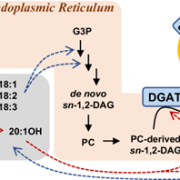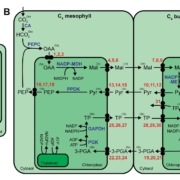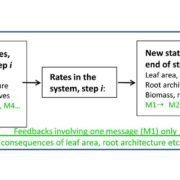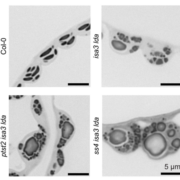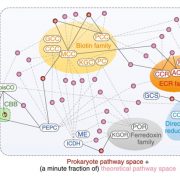Dynamic thylakoid stacking regulates the balance between linear and cyclic photosynthetic electron transfer
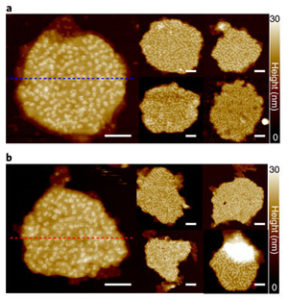 The activation of photosynthetic electron transport upon a dark-to-light transition occurs prior to the initiation of CO2 fixation by Rubisco in the Calvin cycle. A mechanism known as cyclic electron transfer (CET) exists that generates the proton motive force required to drive ATP synthesis without an accumulation of NADPH, thereby protecting photosystem I during this lag. Dark-to-light transitions also lead to the phosphorylation of the light harvesting complexes of photosystem II (LHCII). Wood et al. demonstrate that increased LHCII phosphorylation does not alter the relative sizes of the photosystem antennae as seen in state transitions. Instead, they show that it leads to a weakening of LHCII-LHCII interactions, resulting in smaller but more numerous grana, and so gives rise to conditions that favour linear electron transfer (LET) over CET. This work reveals how dynamic changes in thylakoid architecture can affect the balance between LET and CET in response to a changing light environment. (Summary by Mike Page) Nat. Plants. 10.1038/s41477-017-0092-7
The activation of photosynthetic electron transport upon a dark-to-light transition occurs prior to the initiation of CO2 fixation by Rubisco in the Calvin cycle. A mechanism known as cyclic electron transfer (CET) exists that generates the proton motive force required to drive ATP synthesis without an accumulation of NADPH, thereby protecting photosystem I during this lag. Dark-to-light transitions also lead to the phosphorylation of the light harvesting complexes of photosystem II (LHCII). Wood et al. demonstrate that increased LHCII phosphorylation does not alter the relative sizes of the photosystem antennae as seen in state transitions. Instead, they show that it leads to a weakening of LHCII-LHCII interactions, resulting in smaller but more numerous grana, and so gives rise to conditions that favour linear electron transfer (LET) over CET. This work reveals how dynamic changes in thylakoid architecture can affect the balance between LET and CET in response to a changing light environment. (Summary by Mike Page) Nat. Plants. 10.1038/s41477-017-0092-7


